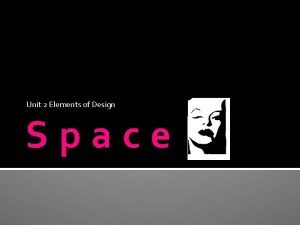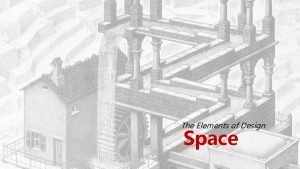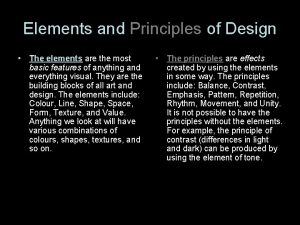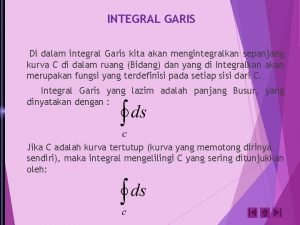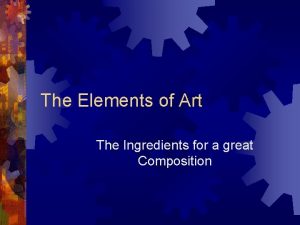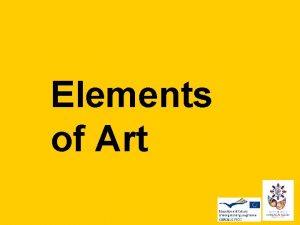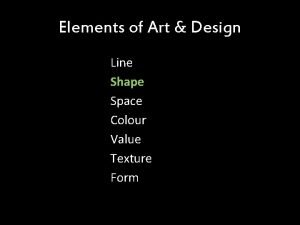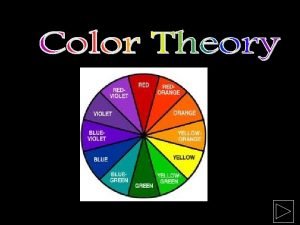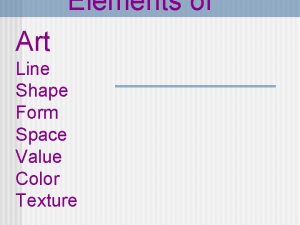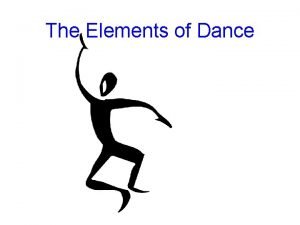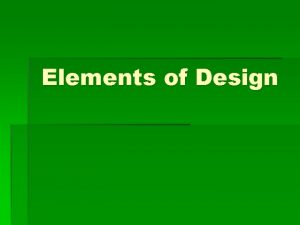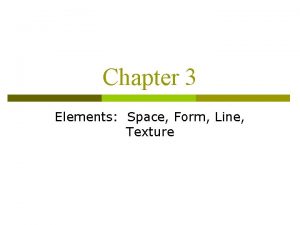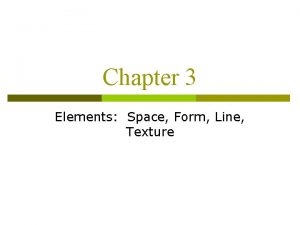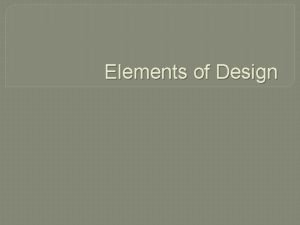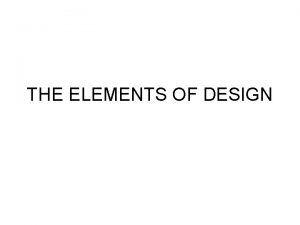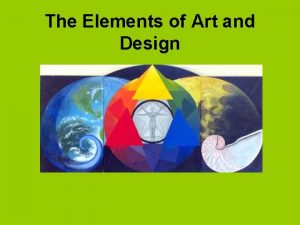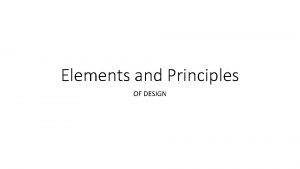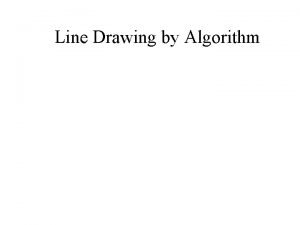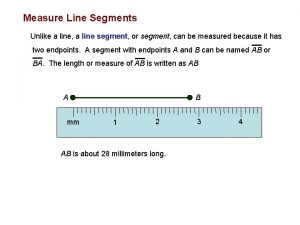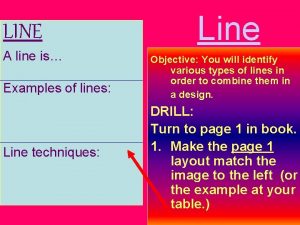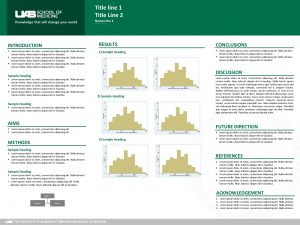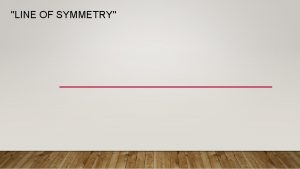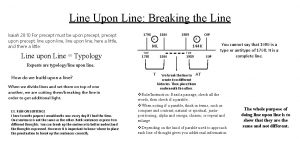Elements of Design Elements of Design Space Line






















- Slides: 22

Elements of Design

Elements of Design § Space § Line § Shape § Form § Texture § Color

Space § Space is the area provided for a particular purpose. § Residential space can be defined by walls, dividers, or other objects. § Any space- no matter the size or shapecan be divided into distinct parts. § EX: The furnishings not walls, define space in this open kitchen.

Space § Divisions of space can provide a sense of security and privacy. § EX: Fences and hedges are used to accomplish this purpose outdoors and screen out unwanted views and noises.

Space § Too little space = a feeling of being exposed, loss of privacy. § Too much space = lonely feeling. § It is important to be aware of the feeling of space and use it to enhance design. § Space is affected by the Number and Size of the objects in it. § Space is more pleasing when it changes gradually- instead of abruptly.

Line § Gives direction to a design. § Can emphasize a pleasing element or disguise and undesirable one. § Different types of lines have different effects: § Vertical Lines § Horizontal Lines § Diagonal Lines § Curved Lines

Line- Vertical Lines § Lead the eye up- adding height, formality, and strength. § Often seen in: tall furniture, columns, pillars, wallpaper, and curtains. § Make the ceiling appear higher and rooms tend to seem more spacious than they actually are.

Line- Horizontal Lines § Lead the eye to the left or right- suggesting informality and restfulness. § Often seen in: long, low roofs and in long low furniture such as sofas and chests. § Tend to make buildings, rooms, and furniture seem wider and lower.

Line- Diagonal Lines § Suggests action, movement, and excitement. § Can become overpowering and tiringshould be used sparingly. Evident in: gable roofs, cathedral ceilings, and staircases.

Line- Curved Lines § Add a softening, graceful effect to designs. § Too many curved lines can create a busy look. § Seen in doorway arches, ruffled curtains, and curved furniture.

Line § In design, one type of line should dominate. § Others may be added for interest. § EX: Horizontal lines may dominate a room, while accessories with diagonal or curved lines may be an accent.

Shape § 2 -Dimensional element of design. Length & Width. § It is a flat or silhouette image, rather than one containing volume or mass. § Created by intersecting lines to create squares, rectangles, and triangles. Or one continuous line connecting to make a circle.

Shape § § § They may also look irregular. Irregular shapes attract greater interest. The surface treatment of a shape can affect its overall appearance. § Shiny- reflects images, creates a transparent visual effect. § Bright, Smooth- adds interest. § Highly textured- absorb light and sound.

Shape § Surfaces can also be: § Hard or Soft § Plain or Patterned § Be of Light, Medium, or Dark Value

Form § 3 -dimensional Length x Width x Depth x Volume x Mass § Cubes, pyramids, cones, and spheres are common forms. § Other examples of form can be found in furniture and architecture. § Forms, such as furniture should be chosen after considering how they relate to the interior space.

Form § Form can also convey a fragile or stable appearance. § Thin Forms = delicate & fragile. § Heavy Forms = stability & sturdy § Related forms tend to look better together rather than unrelated forms. § A room is more pleasing if the form of the dominant piece is repeated in minor pieces and accessories within the room.

Texture § Texture = how a surface feels to the touch or how the surface looks like it would feel to the touch. § Appeals to sight as well as touch. § Ribbed, Crinkled, Rough, and Smooth are common textures. § Patterns and Colors are used to create the illusion of texture.

Texture § Texture can affect color by intensifying or subduing it. § Smooth Textures = reflect light, look lighter and brighter. § Rough Textures = absorb light, look darker and less intense. § EX: Red carpet looks darker and duller than red ceramic tile. vs.

Texture § A balance of textures is needed in a well designed room. § A room decorated in the same texture all the way throughout is Monotonous. § Too many textures can look disjointed and distracting. § The idea is to have a dominant texture with contrasting accents.

Color § Color is considered the most important element of design.

Assignment § Handout assignment sheet and rubric for Elements of Design Samples. § Example on next slide!

Vertical Lines The columns on the front of this home are a perfect example of how vertical lines are used as an element of design. The columns make the house appear tall, narrow, and very formal.
 Principle of surveying
Principle of surveying Elements of design assignment
Elements of design assignment Elements of design: space
Elements of design: space Steve magada trio
Steve magada trio Cartesian space trajectory planning
Cartesian space trajectory planning Space junk the space age began
Space junk the space age began Camera space to world space
Camera space to world space Cartesian space vs joint space
Cartesian space vs joint space World space to screen space
World space to screen space Restful like the horizon where the sky meets land
Restful like the horizon where the sky meets land Materi integral garis
Materi integral garis Shapes that have smooth even edges and are measurable
Shapes that have smooth even edges and are measurable Line color form
Line color form Line shape space
Line shape space Polygon drawings line color value texture shape space form
Polygon drawings line color value texture shape space form Line shape space
Line shape space Cmu 16385
Cmu 16385 Art basics
Art basics Elements and principles of design ppt
Elements and principles of design ppt Size in elements of dance
Size in elements of dance Elements of art space
Elements of art space Elements of art space
Elements of art space Elements of art space
Elements of art space

